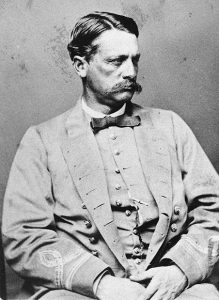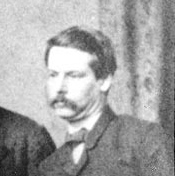Primary Sources: Through a Telescope Backwards

 Perhaps no experience is more fulfilling for a historian than becoming immersed in contemporary first-person chronicles, viewing dramatic happenings through the eyes of those who lived them.
Perhaps no experience is more fulfilling for a historian than becoming immersed in contemporary first-person chronicles, viewing dramatic happenings through the eyes of those who lived them.
Thankfully, our Civil War ancestors were avid and literate recorders of that fascinating era. We are blessed with an embarrassment of riches in diaries, letters, newspapers, memoirs, articles, reports, etc. ranging from the commander-in-chief to the lowliest soldier, sailor, and citizen.
Our challenge is to empower their voices to tell their story, distilling vivid accounts into insightful narrative history. But taken individually, these sources furnish constricted and dim views of little pieces of huge, complex events—like looking through a telescope backwards. They are subject to human vagaries of memory, perspective, bias, and personal agenda. We must interpret, fill in gaps, and provide context.
This author’s experience in writing his first book manifested the joys and struggles of dealing with these voices from the past. A Confederate Biography: The Cruise of the CSS Shenandoah (Annapolis: U.S. Naval Institute Press, 2015) relates the story of the last Confederate commerce raider.
The core of the effort was an unusually rich aggregation of four personal cruise journals, a couple of immediate post-war memoirs, letters, reports, and newspaper accounts. Collectively they provide detailed, complementary and contrasting viewpoints ranging from senior to junior and staff officers in a small, isolated command over a thirteen-month, globe straddling cruise. These writings had never been comprehensively merged into a fluent narrative. Some had been published, some not. What could be better?
All navy commanding officers were (and are) required to maintain a formal record—the ship’s log book—of the ship’s positions, wind and weather, courses steered, sails set, engine speed, average speed and distance attained, and notable events. Ship’s logs make dry reading but provide a structured, official timeline.
Midshipmen—officers in training—were required to keep training logs with navigation calculations and observations that were critiqued by seniors. Officers participated in the daily noon sun sights and calculations of ship’s position both for practice and for cross checking. Although not required, many officers habitually maintained their own personal logs/journals adding diary-like observations, feelings, and opinions.
As with diaries, it is sometimes difficult to understand the why and to whom these men composed such intensely personal accounts—perhaps to their progeny, perhaps to posterity, perhaps only to themselves. Motivations of Shenandoah officers seem to vary as they recorded personal and professional highs and lows, aching loneliness, and intense anxiety for family and country.

Captain James Waddell was a veteran, old-school U.S. Navy officer who wrote two Shenandoah accounts, one immediately post war and another many years later. The former is a detailed, annotated cruise log book resembling an official campaign report in which Waddell sought to justify his actions to posterity.[i]
The latter is a public memoir containing most of the same material, but with discontinuities of memory and purpose, and therefore less reliable.[ii]
Lieutenant William Whittle, second in command and a product of the new generation out of the Naval Academy at Annapolis, poured heart and soul into almost obsessive daily entries. This cathartic journal is sometimes painful to read but provides the most comprehensive single account.[iii]

Lieutenant Francis Chew was a young middle-class Missourian who became enamored of navy life from books, attended the Naval Academy, and served briefly before joining the Confederacy. His mild, western temperament suited neither the structured class milieu of his colleagues nor the harsh realities of navy life.
Chew’s journal ignores or glosses over personal and professional struggles (documented by his compatriots). But he pens sensitive and perceptive travelogue portraits of the environment and of people encountered including natives of the Pacific island of Pohnpei.[iv]

With difficult cruises as U.S. Navy surgeon under his belt, Doctor Charles Lining was a knowledgeable and perceptive observer outside the formal chain of command. Young officers turned to him for venting frustrations or for advice. Lining participated actively, took sides and offered opinions—recorded in his journal—that had nothing to do with medicine.[v]
Young Midshipman John Mason—scion of a Virginia first family—provides inciteful junior-officer commentary on his superiors and events.[vi] Master’s Mate Cornelius Hunt published the first cruise memoir (1867). Along with much good information, it contains inaccuracies and exaggerations mostly intended to inflate his relatively minor role. Hunt’s picturesque Victorian prose also provides wonderful descriptions.[vii]

With these and other great sources, I ended up reversing my original plan to compose the story first, making sure to get timeline and facts straight from authoritative sources, and then illuminate the narrative with what personal writings were available.
The initial effort became primarily one of collating—cutting and pasting together—the several accounts covering a short period or concentrated series of events, and then distilling, summarizing, and selectively quoting into a logically flowing narrative with effective transitions. It was a daunting task more of editing than original composition. (What a great tool the word processor is!)
It only remained to unobtrusively weave in background elements and context clarifications from secondary sources. Even when not directly quoting, the text tends to reflect participants’ terminology, phraseology, and viewpoints.
In fiction, the technique is called “free indirect discourse” in which a third-person narrator borrows descriptive words or phrase from the characters to give the reader a sense of how the characters are reacting to an unfolding scene. This contrasts with description by direct character dialog (i.e., quotes) or by an omniscient third-person narrator (i.e., author) speaking from outside the character’s perspective.
Careful comparison of these writings was required to ensure comprehensive coverage, to balance bias, to account for personal agendas (including accidental or intentional falsehood), and to correct inaccuracies, some which have been carried forward by other history writers. (Then there are coveted sources that regretfully never materialize such as an illusory cruise journal by Shenandoah Lieutenant Sydney Smith Lee, Jr., nephew of R.E. Lee and brother of Fitzhugh Lee.)
The goal is to elucidate events as much as can be imagined through the participants’ mind and senses leaving most judgments to the reader. The author’s voice is minimized, and historical judgments are, it is hoped, few and easily perceived.
The process becomes very personal as the author comes to know these long-gone people under extraordinary circumstances: their personalities, strengths and weaknesses, hopes and fears, joys and sorrows so like our own.
As an example, the following book excerpt narrates the sinking in the North Atlantic of the CSS Shenandoah’s first victim, the Alina, a merchant ship from Searsport, Maine. This description is distilled almost entirely from words of the observers with just a few additional adjectives thrown in.
The Yankee vessel has been plundered for everything useful to the Rebels; crew and officers have been removed with their belongings to Shenandoah, and holes have been drilled in the hull. Alina is empty of life and filling with water as they viewed the scene from Shenandoah’s deck.

[Midshipman] Mason stood on the poop watching, an entirely new experience for him. She was a beautiful little thing, he wrote, as neat as a pin. Yards were square, all sails set and sheeted home including royals and flying jib. At every pitch the doomed vessel seemed not to rise as much as before. At about 5:00 p.m., the sea reached deck level and swept over the stern. She pitched heavily once more and then reared up like a war horse, thrust her bowsprit to the heavens, and, accompanied by a crescendo of cracking and tearing of rigging and sails, snapping lines, crashing masts, and tumbling and rumbling cargo, slipped straight out of sight, swallowed in an instant by the sea. As the bow went under, an enormous jet of water erupted into the air followed for some time by loose gear—hatch covers, blocks, spars, and flotsam—bursting the surface to splash among a boiling mass of wreckage.
“It was a grand and peculiar sight,” wrote [Lieutenant] Chew. “I was saddened at the thought of being in duty bound to such work. I felt very sorry for them even after thinking of the hellish work of the Yankees at home, of the tears they have wrung from once happy, beaming eyes. No, none of us took pleasure in it. None but fiends could.” [Lieutenant] Whittle described it as grand and awful: “You might go to sea for many a day and would not see a vessel sink…. She was in this position [like] a man going down for the first time and struggling to prevent it….” [Doctor] Lining: “It was a beautiful, yet to me a melancholy sight, to see her go down, even though she was an enemy’s property. It is our duty to do it, & stern necessity alone makes it right….”[viii]
Historians might not be quite as blessed with sources on every occasion, but many good first-person accounts are out there, and they are more available than ever. This approach can be very useful: gather, collate and distill their writings first and build from there. It is extremely satisfying when the words—their words—come together right, not quite as good as making love but close.
[i] James I. Waddell, “Extracts from notes on the C.S.S. Shenandoah by her commander, James Iredell Waddell, C.S. Navy,” in The Official Records of the Union and Confederate Navies in the War of the Rebellion (Washington, D.C.: U.S. Government Printing Office, 1896), 1, 3:792-836.
[ii] James D. Horan, ed., C.S.S. Shenandoah: The Memoirs of Lieutenant Commanding James I. Waddell (New York: Crown Publishers, 1960).
[iii] William C. Whittle, Jr., The Voyage of the CSS Shenandoah: A Memorable Cruise (Tuscaloosa: University of Alabama Press, 2005).
[iv] Francis Thornton Chew, “Reminiscences and Journal of Francis Thornton Chew, Lieutenant, C.S.N.,” Chew Papers #148, Southern Historical Collection, University of North Carolina Library.
[v] Charles E. Lining, Journal, Eleanor S. Brokenbrough Library, Museum of the Confederacy, Richmond, VA.
[vi] James T. Mason, Journal, Eleanor S. Brokenbrough Library, Museum of the Confederacy, Richmond, VA.
[vii] Cornelius E. Hunt, The Shenandoah; Or, The Last Confederate Cruiser (New York: G.W. Carelton, 1867).
[viii] Dwight Sturtevant Hughes, A Confederate Biography: The Cruise of the CSS Shenandoah (Annapolis: U.S. Naval Institute Press, 2015), 33-34.
Dwight Hughes
Excellent presentation of the importance of timing, relevant exposure, and raison d’etat.[although it is sometimes the “inadvertent exposure” of the bit-player, the man at the wrong end of the telescope, who witnesses a seemingly unremarkable occurrence, but records the exact time of that event, that upends “accepted history.” ]
Cheers
A poignant account of the sinking enemy ship.